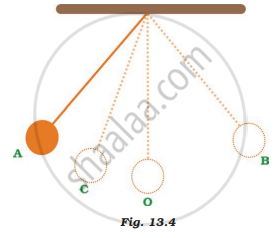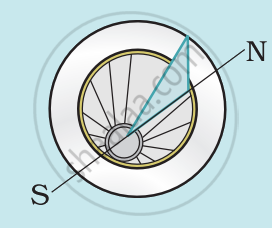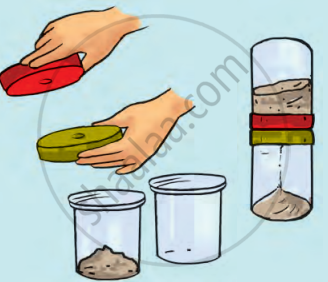Advertisements
Advertisements
प्रश्न
Tick the most appropriate answer.
A train departs from Delhi railway station at 21:50 hours every day. The time shown in your analog watch at the departure will be
पर्याय
2:50 a.m.
9:50 p.m.
9:50 a.m.
11:50 p.m.
उत्तर
9:50 p.m.
APPEARS IN
संबंधित प्रश्न
Tick the most appropriate answer
Which of the following is not a common unit for measuring time?
Fill in the blank
If the departure time of a train on a railway ticket is printed as 20:35, then it will depart at ............
______ is used to measure the accurate time of the activity.
In earlier days, which instruments are used to measure time?
The metric system of unit is developed in the year ______ by French.
Fig. 13.4 shows an oscillating pendulum.

Time taken by the bob to move from A to C is t1 and from C to O is t2. The time period of this simple pendulum is
Assertion (A): The SI system of units is the improved system of units for measurement.
Reason (R): The SI unit of mass is the kilogram.
You can make your own sundial and use it to mark the time of the day at your place. First of all, find the latitude of your city with the help of an atlas. Cut out a triangular piece of cardboard such that its one angle is equal to the latitude of your place and the angle opposite to it is a right angle. Fix this piece, called gnomon, vertically along a diameter of a circular board a shown in Figure One way to fix the gnomon could be to make a groove along a diameter on the circular board.
Next, select an open space, which receives sunlight for most of the day. Mark a line on the ground along the North-South direction. Place the sundial in the sun as shown in Figure Mark the position of the tip of the shadow of the gnomon on the circular board as early in the day as possible, say 8:00 AM. Mark the position of the tip of the shadow every hour throughout the day. Draw lines to connect each point marked by you with the centre of the base of the gnomon as shown in Figure Extend the lines on the circular board up to its periphery. You can use this sundial to read the time of the day at your place. Remember that the gnomon should always be placed in the North-South direction as shown in Figure.

Collect information about time-measuring devices that were used in the ancient times in different parts of the world. Prepare a brief write up on each one of them. The write up may include the name of the device, the place of its origin, the period when it was used, the unit in which the time was measured by it and a drawing or a photograph of the device, if available.
Make a model of a sand clock which can measure a time interval of 2 minutes.

